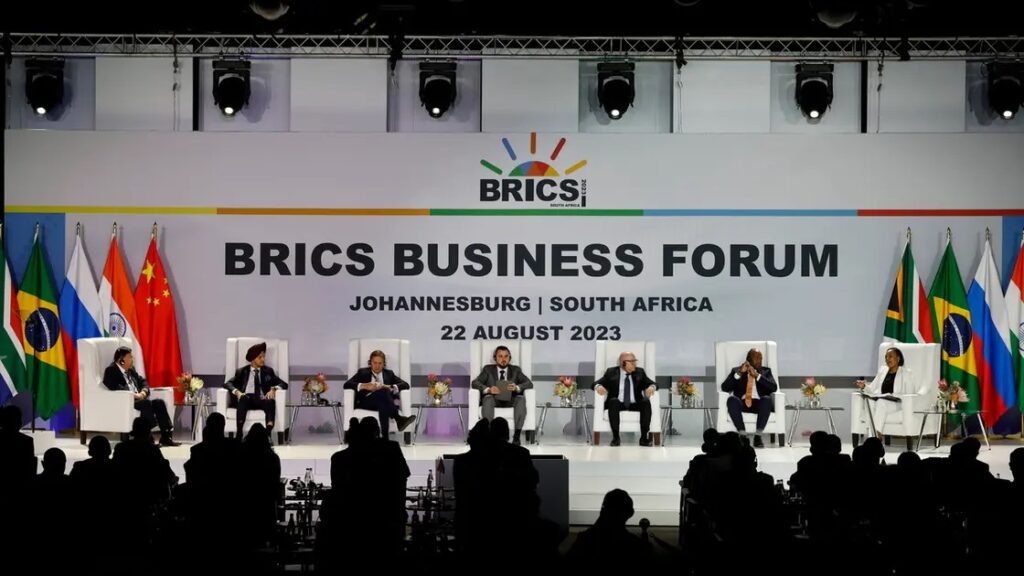Read in
The BRICS summit 2023 kicked off on Tuesday in Johannesburg with a business forum that saw representatives from Brazil, Russia, India, China and South Africa highlight key issues such as enhancing agricultural trade within the bloc along with developing small and medium scale enterprises (SMEs) and economic cooperation.
The representatives addressed the disparities among member nations to boost collective agricultural trade and suggested an increase in import-export activity of agricultural goods within the bloc.
“As a group (BRICS), we import just over $300 billion of agricultural products but a lot of this trade happens outside the bloc,” said Wandile Sihlobo, the Chairperson of the South Africa Agro-business working group. “India and China import roughly 85 percent of that (value) and we think they can import some of these products from Brazil and South Africa and increase trade within the bloc.”
The BRICS nations are a powerhouse of agriculture in both consumption and production, accounting for billions of dollars in trade annually. However, a big chunk of this trade happens with countries outside BRICS – Europe and the US – due to trade barriers within the bloc and a lack of infrastructure necessary to facilitate widescale agricultural trade.
“We (BRICS) need to take a more dominant role in addressing agricultural policies,” said Jai Shroff, member of India’s BRICS Business Council. “The trade barriers within the bloc are going to hugely impact agricultural productivity and the protectionist attitude among member nations might impact agricultural prosperity.”
According to Russia’s representative at the forum, Sergey Katyrin, agriculture is the “most important sector” in the BRICS. Countries in the group buy $315 billion of agricultural products and only 20 percent of this trade takes place with BRICS members.
“There is a huge potential to realize within our allies and interact with other countries in the African continent when it comes to agricultural trade,” Katyrin said.
Representatives at the forum unveiled also an airlift strategy aimed at tackling infrastructure issues and resolving supply chain barriers within the bloc to create an easy access passage within BRICS nations.
“We have proposed an airlift strategy that will be a comprehensive plan to make sure that we have air connection between the BRICS countries, to establish a flow of cargo, passengers, and businesspeople who are travelling to conduct trade and promote businesses,” said Jose Serrador, Chair of the BRICS Business Council Brazil chapter.
Enhancing agricultural trade within the bloc was one of the main topics at the BRICS opening.
Role of SMEs
However, discussions at the forum also shed a light on the bloc’s plans to develop small and medium scale enterprises through implementing friendly government policies, promoting open markets, and adopting multilateral treaty systems outlined by the World Trade Organization.
“We cannot leave small and medium enterprises behind because the nature of our economies is such that they are driven by SMEs, and in fact SMEs are at the center for job creation,” said Busi Mabuza Chair of South Africa’s chapter of BRICS Business Council.
The BRICS summit will continue for three days, concluding on August 24. Leaders from BRICS nations and other invited delegates are expected to discuss key issues concerning the bloc’s expansion and trade relations over the course of the next two days.



